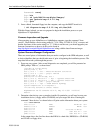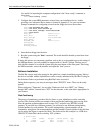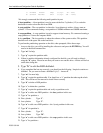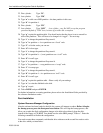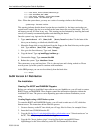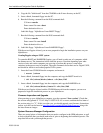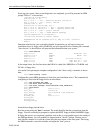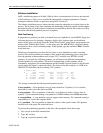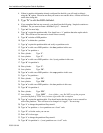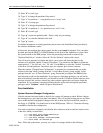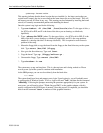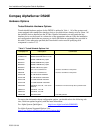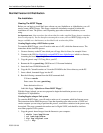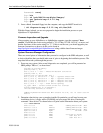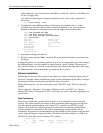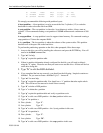
Linux Installation and Configuration Guide for AlphaServer 33
ECG513/0100
4. If there is partition information already configured for the disk, you will need to delete it
using the “d” option. Please be sure that you want to zero out this drive. All data will be lost
on the drive doing this.
5. Type “b” to edit the BSD disklabel.
6. If you completed the last step correctly, you should see the following: “/tmp/sda contains no
disklabel. Do you want to create a disklabel? (y/n)” – Answer Y.
7. Type “m” for more help.
8. Type “p” to print the partition table. You should see a “c” partition that takes up the whole
disk. This will have to be removed to install Linux correctly
9. Type “d” to delete a BSD partition
10. Type “c” to delete the c partition
11. Type “p” to print the partition table and verify no partitions exist
12. Type “n” to add a new BSD partition – the boot partition in this case
13. Type “a” for partition a.
14. First cylinder: Type “1”.
15. Last cylinder: Type “2”.
16. Type “n” to add a new BSD partition – the / (root) partition in this case.
17. Type “b” for partition b.
18. First cylinder: Type “3”.
19. Last cylinder: Type “28”.
20. Type “n” to add a new BSD partition – the swap partition in this case.
21. Type “c” for partition c.
22. First cylinder: Type “29”.
23. Last cylinder: Type “550”.
24. Type “n” to add a new BSD partition – the /usr partition in this case.
25. Type “d” for partition d.
26. First cylinder: Type “551”.
27. Last cylinder: Type “1023” ; last cylinder - one. Do NOT accept the program
generated default of "1024" here, because of possible disk corruption.
28. Type “p” to print the partition table. You should notice that the fstype is set to unused for
each of the partitions. This will have to be changed via “toggle” – see next step.
29. Type “t” to change the partitions filesystem id.
30. Type “a” for partition a – boot partitions use a “boot” code.
31. Type “L” to list the codes you can use.
32. Enter “d” for boot type.
33. Type “t” to change the partitions filesystem id.
34. Type “b” for partition b – / (root) partitions use a “ext2” code.



